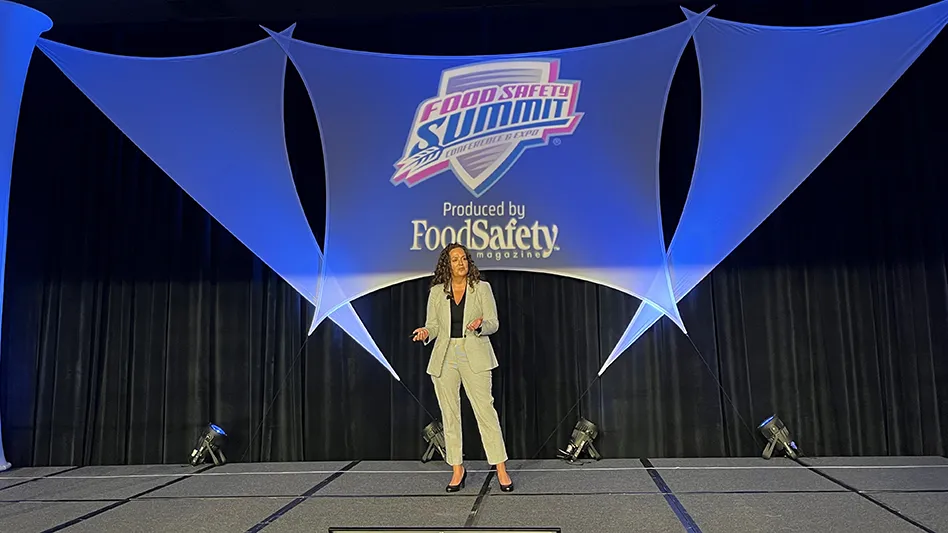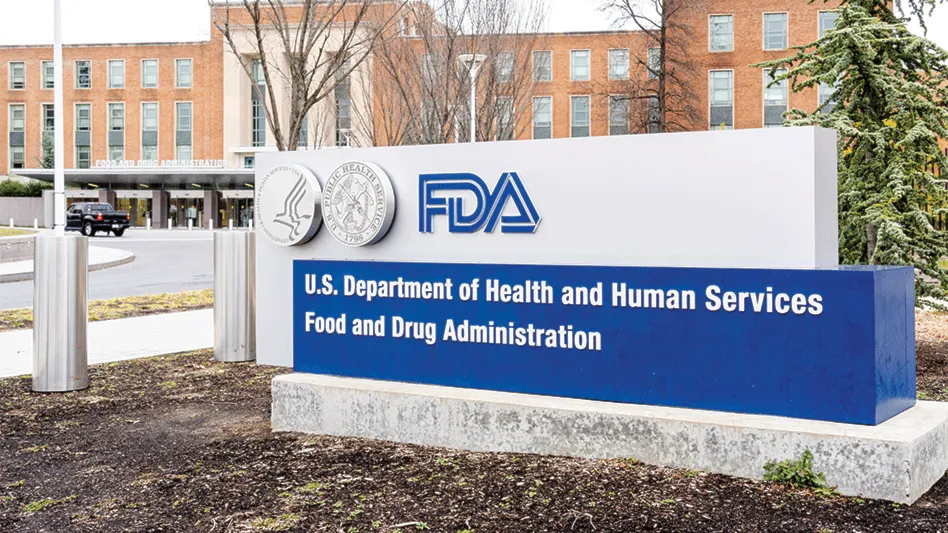It was a crisp fall day when I received a call from my wife in a panic saying I needed to meet her at the hospital. My then two-year-old son, Gavin, had had an anaphylactic reaction. “We don’t have time for questions,” she said in a haste to get me off the phone and on my way. “I’ll explain everything when you get here.” Arriving at Gavin’s room in the Emergency unit, I took one look and was shocked—Was this really my son? He was as red as a strawberry; his face was swollen and round as a schoolyard kickball. It was, of course, my son, but he was covered with hives and was laboring to breathe. I felt helpless, unable to do anything for him. I was astonished that a small bite of cashew could have caused all this.
I work in the food industry and ironically, just weeks prior to this, I had attended a food allergen conference where the speaker showed slides of children who had experienced anaphylactic reactions. The youth in the picture were shown with very red faces and swollen body parts, and I thought to myself, how can that happen? What makes that happen?
At the conference, I learned that establishing allergen thresholds is not a perfect science. While some allergic individuals may experience minor symptoms when eating foods, others may experience life-threatening anaphylaxis when exposed to nearly immeasurable amounts of food. I also learned that a person’s tolerance level can vary, based on factors such as how rested he or she is, whether the immune system is already compromised due to fighting illness, or other conditions that affect the body’s level of inflammation. However, one point was invariable and clearly made: When an anaphylactic reaction occurs, swift and appropriate action, including use of epinephrine and calling 911, is imperative for survival.
What is a person with a food allergy to do? Because most food-allergic individuals must assume that anaphylaxis is always a risk if they accidentally ingest certain foods, they must be hyper-vigilant. Reading nutrition and ingredient labels becomes second nature, and eating out always has risk; those affected by food allergies must rely on kitchen staff who are appropriately trained and able to maintain food preparation that reduces the risk of cross contact. Often, allergic individuals will forego bakeries and other food establishments because the risk just seems too high.
How should the food industry respond? Should the regulations remain as is, requiring only that the food manufacturer label the allergens that are contained in that food product? Or should food manufacturers be required to label all allergens that are utilized within the facility? If no allergen is in the ingredient list of a product, can the consumer be confident that the manufacturer cleaned the equipment properly to avoid cross contact with any potential allergen that was in products made previously on the same line? Consumers should be able to expect diligent and clear communication on the label.
What about the supplied ingredients? Multiple suppliers may be involved in a finished product, calling into question who is accountable in determining allergen risk. The finished goods manufacturer carries the responsibility of fully understanding the supply chain all the way down the line so they have full confidence that none of their ingredients risk containing an allergen—unless it is labeled as such.
As a food manufacturer, I say let’s be diligent and smart about the process and use evaluation tools such as enzyme-linked immunosorbent assay (ELISA) testing to determine if our cleaning is effective in controlling allergens and assuring that the equipment is clean with no carryover of any allergenic material. The ELISA is a test that uses antibodies and color change to identify a substance. However, again the questions become: How clean is clean enough? Is the ELISA-testing threshold sensitive enough to protect all consumers? Is low enough, good enough? This last question is one, in particular, that must be answered. Stronger regulation in labeling content also is needed so that consumers are provided with consistent information. “May contain” statements are vague and do not clearly identify if foods are used in the same facility, in another area, or on the same line. Because these statements are also arbitrary, food allergic individuals can only hope that the absence of such a statement means that there is no risk of contamination. Stronger industry standards are needed to help reduce the chance of a consumer digesting an incorrectly, inaccurately, or non-identified allergen that could create a serious reaction.
Breaking Out of the Bubble Read more about a day in the life of a food-allergic person in Breaking Out of the Bubble (QA, May/June 2009). For this article, QA Editor Lisa Lupo spent a day with the family of David and Kari Keaton in Rockville, Md. To portray the world in which the food-allergic person lives, she visited with twins Jeremy and Joni at home and at school, dined at a restaurant and grocery shopped with Kari, and spoke with then-16-year-old Daniel by phone. It is a world in which food safety is an every-minute focus for the entire family, and allergenic cross contamination and quick response is a matter of life and death. It is a world in which options become extremely, and too often, unnecessarily limited by what is perceived as too many manufacturers’ self-protective precautions. |
As the father of a son who has experienced an anaphylactic reaction, I would like to see more manufacturers using facilities that are dedicated allergen-free. They do exist and label their products as such, stating, for example, “Made in a dedicated nut- and gluten-free bakery.” At the same time, I have to trust that these manufacturers truly do prevent any and all allergens from entering their facilities. They must know their supply of materials is allergen free and their suppliers are diligent with their allergen controls and testing.
Regardless of what is required by regulation, however, it is ultimately the manufacturer’s ethical responsibility to protect the consumer. Manufacturers must produce safe food, label the food with its true content, and alert consumers if the product could contain an allergen from product previously run on a line, or if allergen-containing ingredients are stored or transported alongside non-allergenic ingredients. Food manufacturers cannot make high-risk assumptions with regard to food allergens. This can be a life or death situation for those with food allergies. Full allergen awareness is a must for food manufacturers to maintain confidence and protect consumers.
It was 10 years ago that my young son helped himself to some cashews that his five-year-old twin siblings were sharing, and that moment changed his life significantly. Gavin is now an active 12-year-old who has learned to read labels of all packaged food items and to advocate for himself at restaurants, telling servers that he has a nut allergy and asking for clarification if they might have certain food items that either contain or come in contact with nuts. He is very diligent in his effort. We need all food manufacturers to put forth an equally devoted effort to protect their precious and valued consumers.

Explore the December 2014 Issue
Check out more from this issue and find you next story to read.
Latest from Quality Assurance & Food Safety
- FDA Issues Update on Post-Market Assessment of Tara Flour
- ASI Announces Training Partnership with Rootwurks
- Nfinite Nanotech Closes $6.5 Million Seed Financing to Create Flexible Food Packaging with Nanotechnology
- University of Pretoria Food Science Student Wins IFT and PepsiCo’s Academic and Travel Undergraduate Hybrid Scholarship
- Kraft Natural Cheese and Shawn Johnson East Celebrate Launch of Kraft Signature Shreds
- Natural Sourcing International Announces Voluntary Recall of Black Chia Seeds
- PTNPA's DC Fly-In Connects Members with Policymakers
- Breck Partners Acquires NPX One





